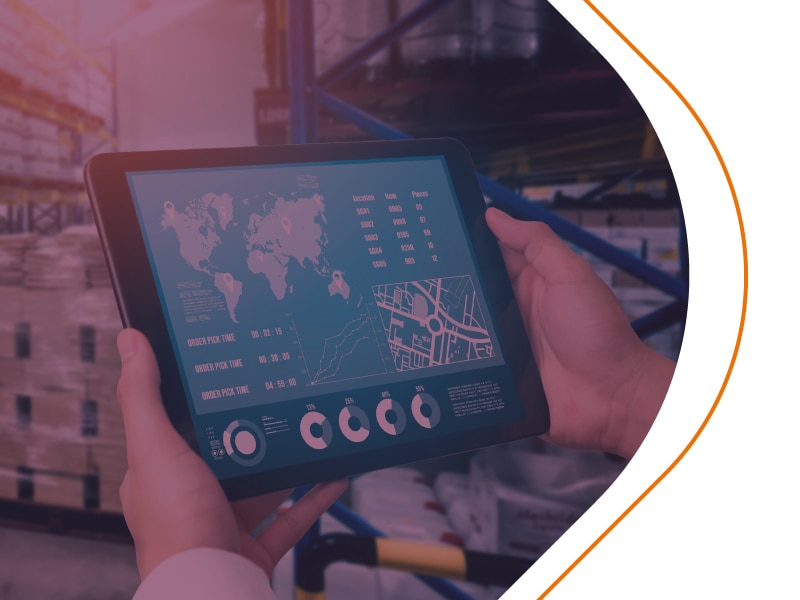Home > TradeEdge > Blogs > Traditional trade networks in FMCG need to be modernized—and automation could be the gamechanger.
Traditional trade networks in FMCG need to be modernized—and automation could be the gamechanger.

FMCG traditional trade networks in emerging markets often have utterly outdated operational practices. Tech transformation is the key to giving brands better channel visibility and control over distributor management.
With a growth that is 2X of traditional trade, modern trade and in particular, e-commerce, is often touted to be the future of FMCG retail. However, the backbone of the industry is still general or traditional trade, the small-scale, independent stores dotting the markets and supplied by distributors and agents. In emerging markets like India, these form a whopping 90% of FMCG sales, leading significantly in rural areas.
Yet, traditional trade is being outpaced by the rapid growth in organized retail and e-commerce. Experts ascribe many reasons for this, primarily a lack of technology investment and modernization. This poses a problem not only for customers (who turn to modern trade outlets for a better shopping experience) but also for the FMCG brands that work with general trade outlets and distributors.
| Traditional/General Trade | Modern Trade or Organized Retail |
|---|---|
| Independent, local stores including mom-and-pop stores and kiosks that get their goods from distributors via sales agents. Purchases are mostly consumer-driven. | Supermarkets, hypermarkets, convenience store chains and e-retailers that source directly from FMCG brands or larger-scale distributors. Purchases are often promotions or marketing-driven. |
Challenges in traditional trade operations
In our experience working with clients from emerging markets in south east Asia, we have come across a few fundamental issues that have a bigger impact along the length of the supply chain.
Outdated distributor business processes
Surprisingly, even large-scale general trade distributors in emerging markets often conduct their business the old-fashioned way, with order taking, invoicing, bookkeeping, etc. still done using pen and paper. In other cases, the most basic on-premise desktop systems are used. All this makes the process not only slow and inefficient, but also inconsistent and error-prone. FMCG brands also struggle to get end-to-end channel visibility about sales and stock numbers.
Incommunicado systems
With the more tech-savvy of distributors, we have observed the opposite problem: that of too many disparate systems. Tech projects are often undertaken and systems deployed piecemeal, with the result that distributors have their data sitting in spreadsheets, ERPs and CRMs that do not work together. This makes it impossible to collate or send data upstream for any meaningful analysis. This was one of the problems faced by Mondelez International, which we helped solve through our TradeEdge Market Connect application. More on that a little later.
Lack of POS data
For FMCG companies who want to help their distributors (and in turn, small scale retailers) optimize their stocking plan and develop promotional strategies for their customers, point-of-sale data is crucial to have. However, not all of the important data is captured. And what is captured is often not in any readily shareable or analysable format.
Poor resource allocation
The primary responsibility of sales agents employed by distributors is to make the rounds of their target markets and ensure that their retailers have the right stock at the right time. However, in the absence of a tech-powered order management system, they spend a great deal of their time in manual data entry and verification, leading to inefficiencies, poor performance and a drop in job satisfaction. As a result, there is higher employee churn and increased costs.
The solution? Technology transformation
With Mondelez, we helped improve employee productivity by 65-70% through TradeEdge and the employee bandwidth thus freed up was directed towards sales effort.
Technology for improved channel visibility
To respond to distributor needs quickly, effectively, and in a timely manner, FMCG brands need extended visibility of business data including stock status, orders pending fulfilment, point-of-sale data, returns, etc. This data also gives a mid to long term view of customer preferences and market trends and flags early warning of problem areas that the brand can help the distributor address.
EdgeVerve’s TradeEdge Market Connect is a two-way data exchange platform that does exactly this. It enables seamless automated data exchange and processing between several trade partners and provides cleansed, validated, transformed and enriched data for better business decision making, analytics and reporting.
Technology for smarter distribution management
In our experience, some of the most common problems faced by FMCG brands dealing with a traditional trade network include a lack of control over products, prices and promotions, poor replenishment practices at the distributor’s end (resulting in 8-10% out of stock), and low market reach (~30-35% outlet coverage).
A unified tech interface like TradeEdge DMS that offers verifiable data and provides better visibility can help tackle all of these problems. Intuitive and highly configurable, TradeEdge DMS is an order management and fulfilment system that helps brands stay abreast of sales and inventory data through an easy-to-use interface and intelligent reporting.
Technology for better data harmonization
Gigabytes of data are generated on a daily basis throughout the general trade supply chain—but FMCG brands struggle to leverage it. Riddled with inaccuracies, in widely varying formats (think CRM, ERP, spreadsheets, email, etc), and often not even available online, data dumps that hold a wealth of customer and market insights often remain unused.
TradeEdge Data Harmonization is a cloud-based solution that leverages automation and machine learning to make data capture simple, consistent, accurate and analytics-friendly. It helps prepare and correct the data through features like language identification and mixed language translation, is able to classify and score data based on defined parameters, and contextualize it for the brand, making it insight-ready.
Digitize, scale, transform: TradeEdge in action
Let me delve a little into how TradeEdge helped Mondelez International, an S&P 500 snack food and beverage company that owns brands such as Cadbury, Oreo, Swedish Fish, and Trident among others, streamline their distributor operations with TradeEdge.
A number of their distributors in emerging markets were still using outdated pen-and-paper processes. For consistency of operations, Mondelez wanted to move these online. They wished to use technology not only to improve channel visibility and efficiency, but also to help distributors modernize their operations and signal to them the brand was investing in their growth.
In this massive transformation process that took place over four months, they chose to work with us, using our TradeEdge application. The result? Efficiency improved by a whopping 70%. Previously, Mondelez was employing two people per distributor for manual data entry; after TradeEdge implementation, these employees were redeployed to the sales team where they started contributing to business development and brand reach. With distributor sales data available almost in real-time on the cloud, the quality of sales reporting and insights also went up significantly.
What’s more, about a year after the TradeEdge implementation, all of Mondelez’ systems were hit by a malware attack—with the exception of the cloud-based TradeEdge. Seeing that none of the TradeEdge data was affected or lost, Mondelez decided to adopt a cloud-first strategy org-wide.
If you are considering a tech transformation for your distributor operations, we can help you maximize channel visibility, improve retail execution, and reach new markets faster. Speak to our experts.


Possibilities Unlimited
Possibilities Unlimited
Inspiring enterprises with the power of digital platforms
More blogs from TradeEdge →